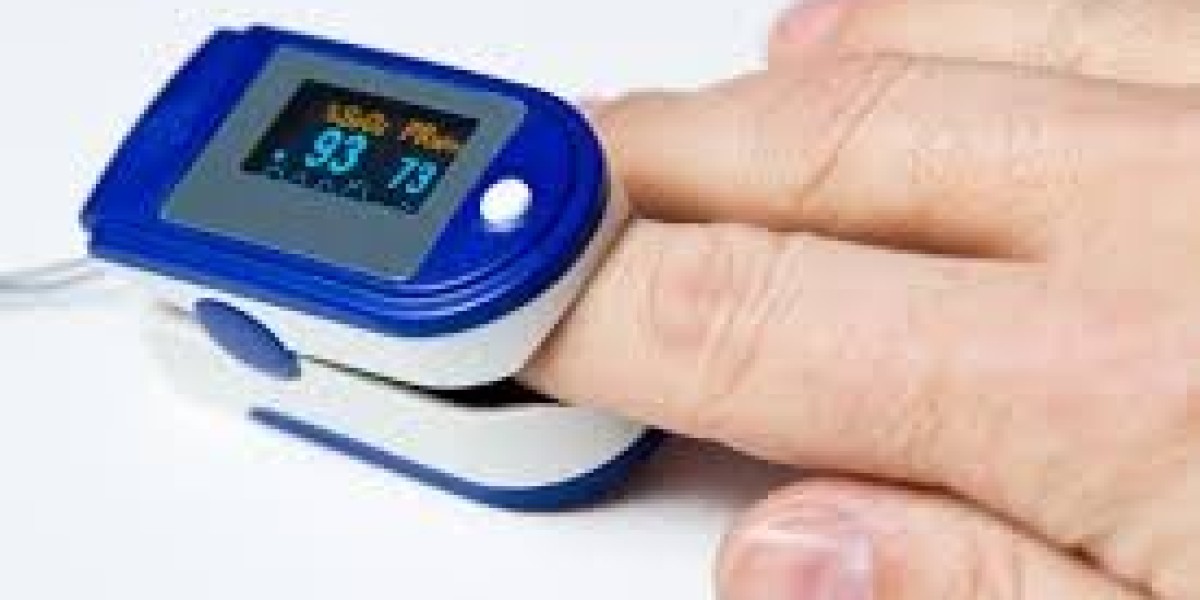In today’s fast-paced world, people are becoming more conscious of their health and wellness. Among the many medical devices now available for home use, oximeters have gained significant popularity. Small, affordable, and easy to use, these devices provide real-time information about your oxygen saturation levels (SpO2) and heart rate—two vital signs that reflect how well your body is functioning.
Whether you’re monitoring a chronic condition, recovering from illness, or simply keeping an eye on your fitness, an oximeter is an invaluable tool. In this guide, we’ll explain why oximeters matter, how to choose the right one, and what to look for before making a purchase.
Why Oximeters Are Important for Everyone
The main function of oximeters is to measure the percentage of oxygen in your blood. Healthy individuals typically maintain oxygen saturation between 95% and 100%. When levels drop below 90%, it may indicate hypoxemia—a condition requiring medical attention.
Here’s why oximeters are now considered household essentials:
COVID-19 & Respiratory Illness Monitoring – During the pandemic, oximeters became vital for early detection of silent hypoxia, where patients had dangerously low oxygen levels without severe symptoms.
Chronic Health Conditions – Individuals with asthma, COPD, pneumonia, or sleep apnea can track oxygen levels regularly to avoid complications.
Athletes & Fitness Enthusiasts – High-performance athletes, mountain climbers, and divers use oximeters to check oxygen intake during strenuous activities.
Senior Citizens – Older adults benefit from routine monitoring to manage respiratory and cardiovascular health.
In short, oximeters provide peace of mind, early warnings, and valuable insights into your overall health.
Types of Oximeters Available
When shopping for an oximeter, it’s important to understand the different types available:
Fingertip Pulse Oximeters
Compact, affordable, and widely used.
Ideal for home use and quick readings.
Handheld Oximeters
Slightly larger and used in clinical settings.
Provide detailed, accurate readings.
Wearable Oximeters
Integrated into smartwatches or fitness trackers.
Suitable for continuous monitoring during sleep or exercise.
Pediatric Oximeters
Specially designed for children and infants.
Come with smaller clips for better accuracy.
Features to Look for in a Good Oximeter
Not all oximeters are built the same. Here are the features you should consider before buying:
Accuracy & Reliability – Always choose FDA or CE-approved devices for trustworthy results.
Display Screen – Look for a bright, easy-to-read LED or OLED screen with clear SpO2 and pulse rate indicators.
Battery Life – Long-lasting or rechargeable options are more convenient for everyday use.
User-Friendly Design – A one-button operation is best for seniors and kids.
Extra Features – Some oximeters come with alarms, memory storage, or smartphone connectivity for long-term tracking.
How to Use Oximeters Effectively
To get accurate readings from your oximeter, follow these steps:
Wash Your Hands – Dirt or nail polish can interfere with the sensors.
Stay Still – Sit down calmly for a minute before testing.
Insert Finger Properly – Use the index or middle finger, nail facing up.
Wait for Reading – Keep still for 10–30 seconds until the results stabilize.
Track Consistently – Measure at the same time daily for more reliable comparisons.
Understanding Your Oximeter Readings
95% – 100%: Normal oxygen saturation.
90% – 94%: Slightly below normal—monitor closely and consult a doctor if persistent.
Below 90%: Low oxygen (hypoxemia)—seek immediate medical help.
Remember: oximeters are monitoring tools, not diagnostic devices. If you notice abnormal readings or symptoms such as shortness of breath, dizziness, or chest pain, consult a healthcare professional immediately.
Best Practices for Oximeter Maintenance
To ensure your oximeter lasts long and stays accurate:
Store in a cool, dry place.
Clean the probe with alcohol wipes regularly.
Replace batteries on time.
Avoid exposing the device to extreme temperatures or moisture.
Benefits of Owning an Oximeter
Peace of Mind – Monitor your oxygen levels anytime, anywhere.
Prevent Emergencies – Early detection of low oxygen helps avoid complications.
Support for Chronic Conditions – Provides continuous data for better disease management.
Travel Convenience – Ideal for people traveling to high altitudes.
Cost-Effective – Saves unnecessary doctor visits by allowing at-home monitoring.
Final Thoughts
As healthcare continues to evolve, oximeters have proven to be one of the most practical and reliable devices for everyday health management. Easy to use, affordable, and highly effective, they empower individuals to take charge of their well-being without constant hospital visits.
If you’re considering buying one, focus on accuracy, ease of use, and battery life. For households with elderly members, chronic patients, or fitness enthusiasts, investing in a quality oximeter is more than just a purchase—it’s an investment in health and peace of mind.
By making oximeters a part of your home medical kit, you gain a powerful tool that helps you stay informed, proactive, and safe in today’s uncertain times.







